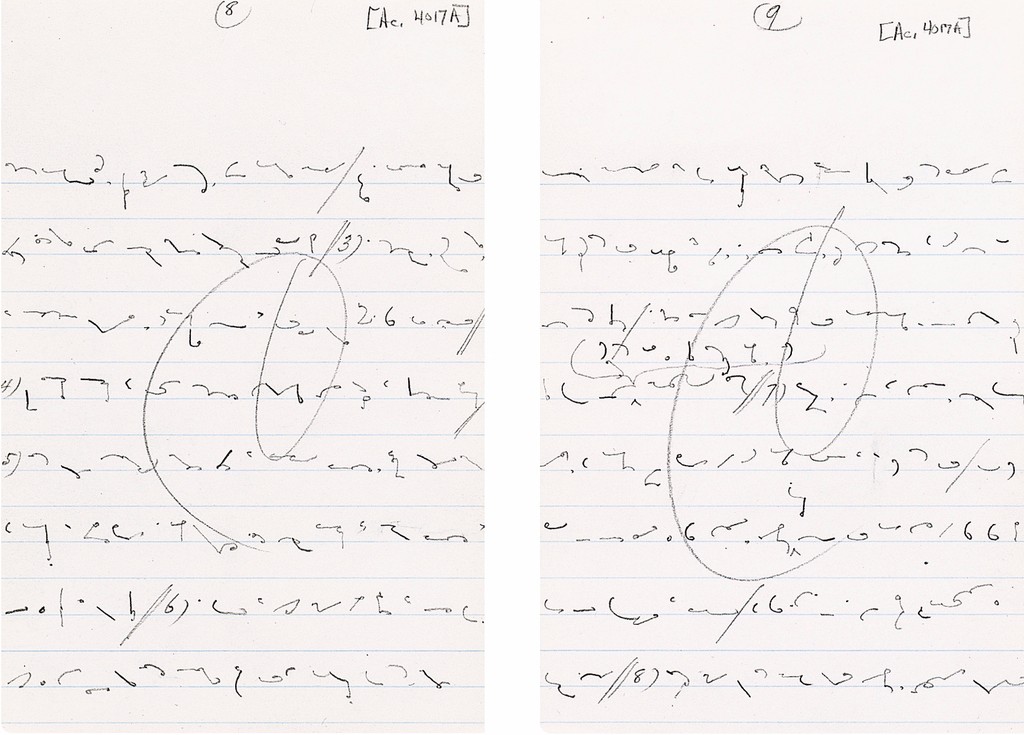January 10, 1920 – The Treaty of Versailles is now in Effect after The Great War
After The Great War, now known as World War 1, the League of Nations had assembled to draft and ratify the Treaty of Versailles. Although the treaty was signed by the German government on June 28, 1919, it did not go into effect until January 10, 1920. The German government, the Weimar Republic, had asked Woodrow Wilson to draft an armistice treaty. The armistice of The Great War declared that [Germany] accepted the Fourteen Points that he had formulated and presented to the U.S. Congress in January 1918 as the basis for a just peace. 1“Treaty of Versailles.” Encyclopædia Britannica. Encyclopædia Britannica, inc., January 6, 2023. https://www.britannica.com/event/Treaty-of-Versailles-1919. While the United States and Germany accepted these terms, other nations did not believe Germany was punished harshly enough for the four years of war they had caused. The Allied Powers had demanded compensation from Germany for all of the damages to the civilian population. Wilson’s original Fourteen Points for world peace called for peace, independence of occupied nations, and a general association of nations must be formed under specific covenants for the purpose of affording mutual guarantees of political independence and territorial integrity to great and small states alike. 2Wilson, Woodrow. “President Woodrow Wilson’s 14 Points (1918).” National Archives and Records Administration. National Archives and Records Administration, February 8, 2022. https://www.archives.gov/milestone-documents/president-woodrow-wilsons-14-points However, it did not mention any financial reparations from Germany to the Allied nations. This, and a few other added points, is where the Treaty of Versailles comes into play

The War Guilt Clause
Article 231 of the Treaty of Versailles was known as the War Guilt Clause. In Germany, it was more popularly known as the ‘War Guilt Lie”. Article 231 was generally interpreted in Germany at the time as charging Germany with having caused the War. 3Temperley, Harold. “‘WAR GUILT’ IN THE PEACE TREATY.” History 17, no. 67 (1932): 231–37. http://www.jstor.org/stable/24400824. Despite Germans calling this a lie, most of the Allied nations, and even all of the German public, just accepted it as a fact – Germany was responsible for causing The Great War. From Part VIII Reparations §1 General Provisions, Article 231 of the Treaty states The Allied and Associated Governments affirm and Germany accepts the responsibility of Germany and her allies for causing all the loss and damage to which the Allied and Associated Governments and their nationals have been subjected as a consequence of the war imposed upon them by the aggression of Germany and her allies. 4Hacken, Richard, and Jane Plotke, eds. “Peace Treaty of Versailles, Articles 231-247 and Annexes, Reparations.” Brigham Young University, November 11, 1998. https://net.lib.byu.edu/~rdh7/wwi/versa/versa7.html. With this clause, Germany unconditionally accepted all guilt for all of the damages, loss, casualties, and loss of civilian life as a result of the War, and are deemed the aggressors. On top of that, the German army began using mustard gas in 1917, which resulted in over 2,000 casualties.
Financial Reparations
Although President Wilson’s Fourteen Points was agreed on by the Allied Powers, there was a big element that was missing which they wanted to be included – financial reparations from Germany for all of the damages they caused over the last four years. When the Treaty was first drafted in 1919, it was impossible to compute the exact sum to be paid as reparations for the damage caused by the Germans, especially in France and Belgium. 5“Treaty of Versailles.” Encyclopædia Britannica. Encyclopædia Britannica, inc., January 6, 2023. https://www.britannica.com/event/Treaty-of-Versailles-1919. In 1921, The damages were assessed at approximately 33 billion dollars; that equates to $551,542,458,100.56 in 2023. When the Treaty was written, economists around the world had deemed it unfeasible for Germany to pay this large sum of money without causing financial problems worldwide. Despite this, the Allies still insisted Germany pay this beyond massive debt. Not only did they still insist this sum of money be paid, the Allies also included in the treaty a section that allowed Germany to be further punished if they could not make their payments. Article 233 of the Treaty states how the Commission shall concurrently draw up a schedule of payments prescribing the time and manner for securing and discharging the entire obligation within a period of thirty years from May 1, 1921. If, however, within the period mentioned, Germany fails to discharge her obligations, any balance remaining unpaid may, within the discretion of the Commission, be postponed for settlement in subsequent years, or may be handled otherwise in such manner as the Allied and Associated Governments, acting in accordance with the procedure laid down in this Part of the present Treaty, shall determine. 6Hacken, Richard, and Jane Plotke, eds. “Peace Treaty of Versailles, Articles 231-247 and Annexes, Reparations.” Brigham Young University, November 11, 1998. https://net.lib.byu.edu/~rdh7/wwi/versa/versa7.html.
Reparations and its Impact on the German Economy
Due to the astronomical amount Germany had to pay, the Weimar Republic began to print more money. While it did seem like printing more money would help the country pay back their reparations faster, there’s one major problem that was not accounted for – inflation. According to Dictionary.com, inflation is “a persistent, substantial rise in the general level of prices related to an increase in the volume of money and resulting in the loss of value of currency”. This is exactly what the Weimar Republic, Germany’s post-war government, was doing. The more German Marks were printed, the less they were worth. In a 1920 newspaper article by the Omaha Daily Bee, the author wrote how the Germans probably will have to work four times as hard, however, to meet this cost 7Rosewater, Victor, editor. “Why The German Mark Has Fallen.” Omaha Daily Bee, 1 Jan. 1920. In 1923, Germany reached the apex of the hyperinflation of its currency. With the amount of money that was printed, the exchange rate between the dollar and the Mark was one trillion Marks to one dollar, and a wheelbarrow full of money would not even buy a newspaper8Smith, Adam. “Commanding Heights : The German Hyperinflation, 1923 | on PBS.” PBS. Public Broadcasting Service. Accessed February 22, 2023. https://www.pbs.org/wgbh/commandingheights/shared/minitext/ess_germanhyperinflation.html#:~:text=In%201923%2C%20at%20the%20most,surprise%20by%20the%20financial%20tornado.
Significance of the Treaty
The Treaty of Versailles had a very negative impact on both German morale, as well as the country’s economic stance. With inflation causing the German Mark to be essentially worthless, people were literally burning money to heat their homes, using it as wallpaper, and although the country functioned again, the savings were never restored, nor were the values of hard work and decency that had accompanied the savings. 9Smith, Adam. “Commanding Heights : The German Hyperinflation, 1923 | on PBS.” PBS. Public Broadcasting Service. Accessed February 22, 2023. https://www.pbs.org/wgbh/commandingheights/shared/minitext/ess_germanhyperinflation.html#:~:text=In%201923%2C%20at%20the%20most,surprise%20by%20the%20financial%20tornado. After the Mark had peaked its inflation rate, a new leader of the Reichsbank, Horace Greely Hjalmar Schacht, had taken over and introduced a new form of currency – the new Rentenmark, which had the value of one billion traditional German Marks. With this new glimpse of prosperity came a new political party in the country. The Nazi Party had promised change in favor of the German public. After a failed coup in 1923, they won 32 seats in the next government election. Along with the Nazi Party, the German Nationalist party won 106 seats in that same election with similar promises as the Nazis; 100 percent compensation to the victims of inflation and vengeance on the conspirators who had brought it. 10Smith, Adam. “Commanding Heights : The German Hyperinflation, 1923 | on PBS.” PBS. Public Broadcasting Service. Accessed February 22, 2023. https://www.pbs.org/wgbh/commandingheights/shared/minitext/ess_germanhyperinflation.html#:~:text=In%201923%2C%20at%20the%20most,surprise%20by%20the%20financial%20tornado. In a way, the Treaty of Versailles could be seen as one of the factors that lead to the start of World War II, as Adolf Hitler used the extremely harsh punishment of Germany for World War I, and the state it left the country in, to start another war, and gain back everything they had been stripped of in the Treaty.
Citations
“American Trade With Germany Is Unchanged As Yet.” The World-News, 1 Jan. 1920.
Hacken, Richard, and Jane Plotke, eds. “Peace Treaty of Versailles, Articles 231-247 and Annexes, Reparations.” Brigham Young University, November 11, 1998. https://net.lib.byu.edu/~rdh7/wwi/versa/versa7.html.
Rosewater, Victor, editor. “Why The German Mark Has Fallen.” Omaha Daily Bee, 1 Jan. 1920.
Smith, Adam. “Commanding Heights : The German Hyperinflation, 1923 | on PBS.” PBS. Public Broadcasting Service. Accessed February 22, 2023. https://www.pbs.org/wgbh/commandingheights/shared/minitext/ess_germanhyperinflation.html#:~:text=In%201923%2C%20at%20the%20most,surprise%20by%20the%20financial%20tornado.
Temperley, Harold. “‘WAR GUILT’ IN THE PEACE TREATY.” History 17, no. 67 (1932): 231–37. http://www.jstor.org/stable/24400824.
“Treaty of Versailles.” Encyclopædia Britannica. Encyclopædia Britannica, inc., January 6, 2023. https://www.britannica.com/event/Treaty-of-Versailles-1919.
Wilson, Woodrow. “President Woodrow Wilson’s 14 Points (1918).” National Archives and Records Administration. National Archives and Records Administration, February 8, 2022. https://www.archives.gov/milestone-documents/president-woodrow-wilsons-14-points.
Woodrow Wilson. 1918. Pencil shorthand draft of ‘The Fourteen Points’ Address. https://library-artstor-org.library2.ramapo.edu:2443/asset/LOCEON_1039801439.

Jacob is a Communication Arts student at Ramapo College. Although creating custom merchandise and promotional products is his passion, he has a soft spot for discovering interesting and obscure history.
